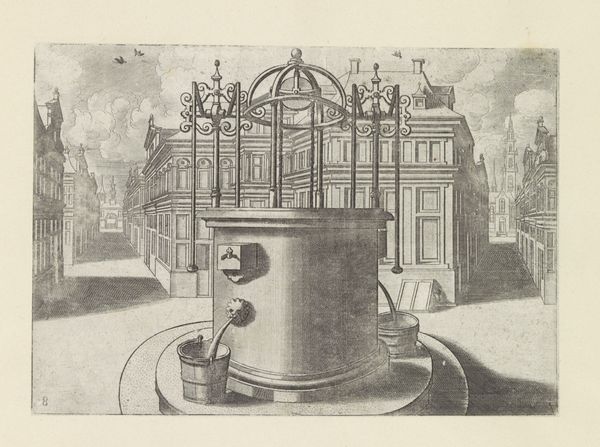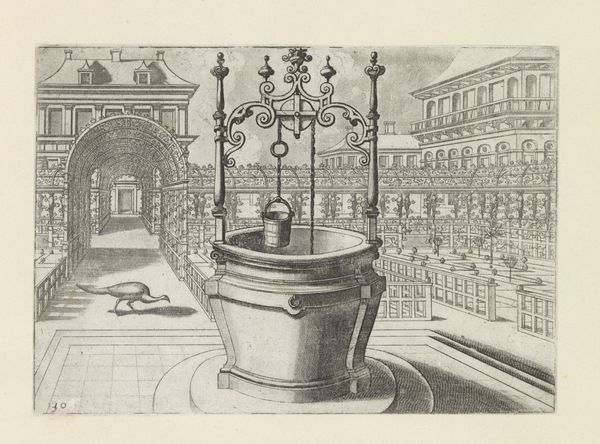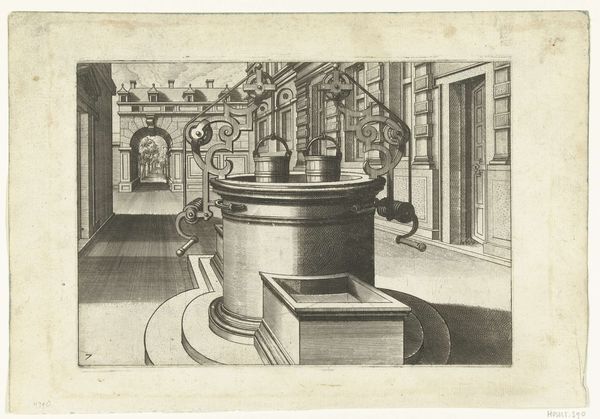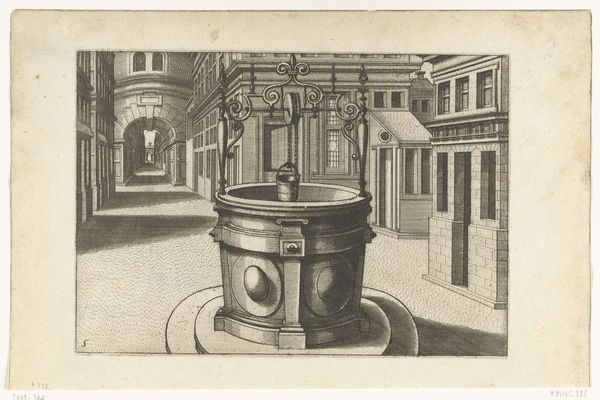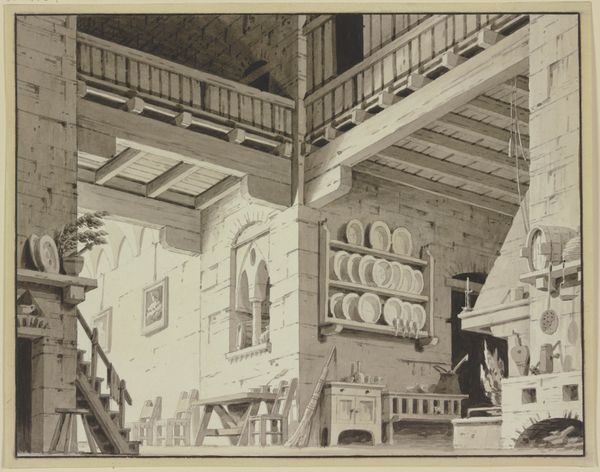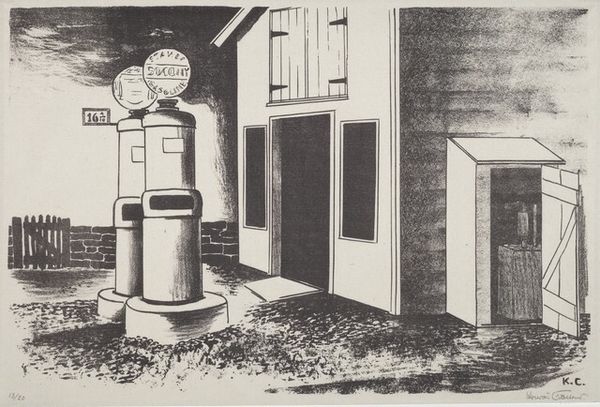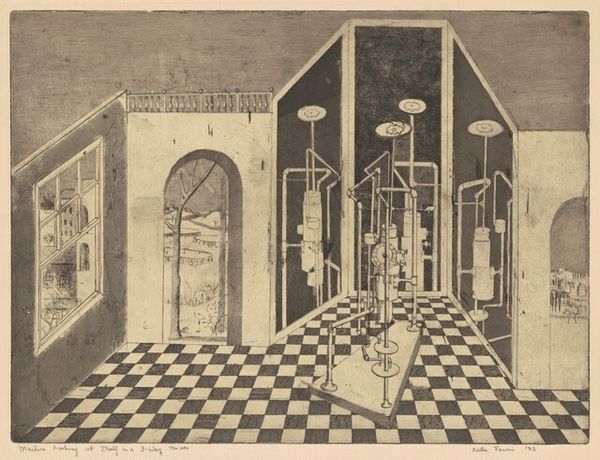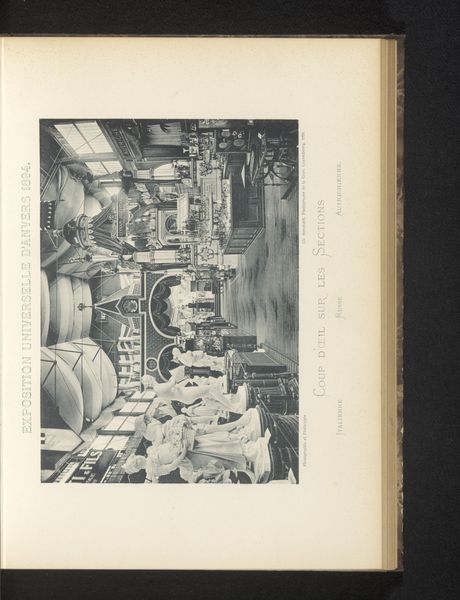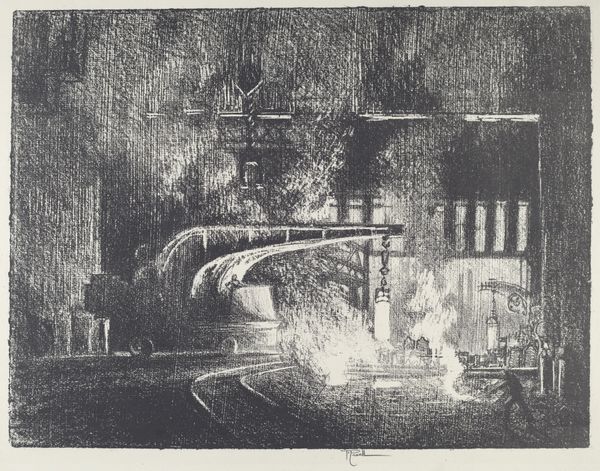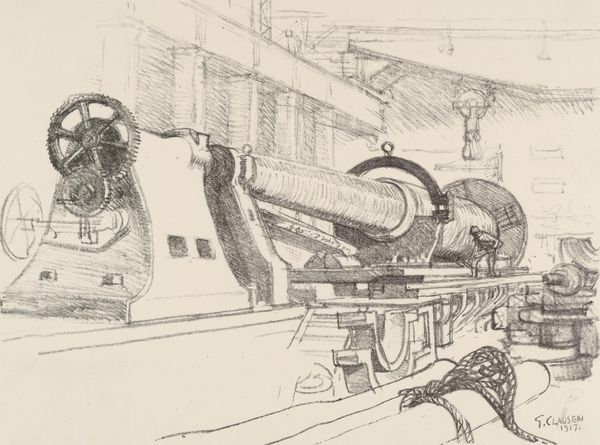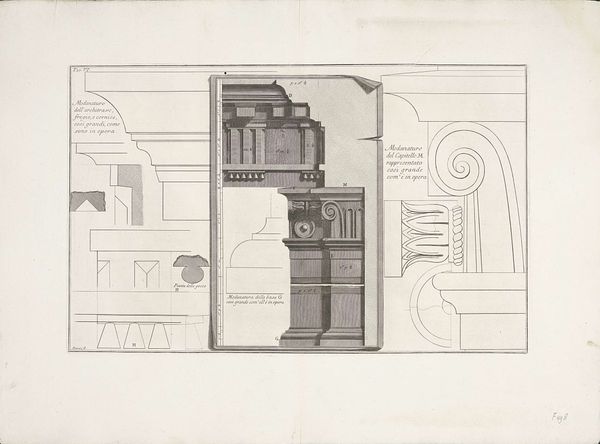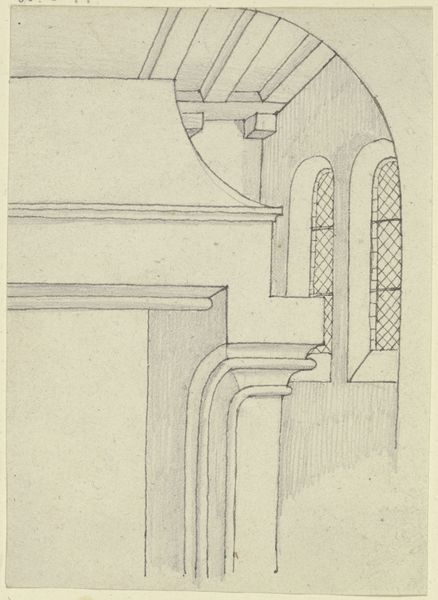
print, engraving, architecture
# print
#
old engraving style
#
landscape
#
11_renaissance
#
engraving
#
architecture
#
realism
Dimensions: height 141 mm, width 202 mm
Copyright: Rijks Museum: Open Domain
Curator: Welcome. We're standing before a striking engraving from around 1574, attributed to Johannes or Lucas van Doetechum. It’s titled "Round Well with Two Buckets and a Pulley". Editor: It's remarkably detailed. The light and shadow create a scene that’s almost theatrical. You can practically feel the coolness of the stone and water. Curator: Absolutely. The architecture, rendered with precision, tells us something about the culture that produced this print. Notice the elegant arches and the suggestion of a courtyard extending into the distance. It's a space of privilege, depicting an aestheticized feature. Editor: And those are no ordinary buckets. Consider the metalwork of the pulleys and how the craftsman has taken something purely functional and made it ornamental. How did the accessibility to clean water shape societal growth, power dynamics, and daily life within that landscape? It feels like early mechanical engineering celebrated as high art. Curator: It speaks volumes about status. Clean water wasn’t a universally available commodity; this well signifies access and control. Engravings like this were often commissioned or produced for a market eager to acquire and display imagery reinforcing particular social structures. Editor: There’s such incredible labor and material complexity to consider as well—the iron ore extracted from the earth, the forging of the metal, and the precise work of the engraver to represent that physicality, the haptic texture of the metallic surface and stonework with ink and paper. Curator: Indeed. And beyond its representation of functional design, the print's existence is rooted in the printing press itself, a technological advancement that reshaped Europe and accelerated the circulation of ideas and images. The art world and print-making are inextricable in this historical moment. Editor: These details open up many compelling perspectives about material culture. Looking at this engraving helps me re-think conventional views of art by highlighting those relationships, asking, for whom and for what purpose were they made? Curator: A perfect summary: a blending of practical need and aesthetic indulgence rendered with remarkable skill and reflective of the prevailing culture. It truly encapsulates much about its era.
Comments
No comments
Be the first to comment and join the conversation on the ultimate creative platform.
